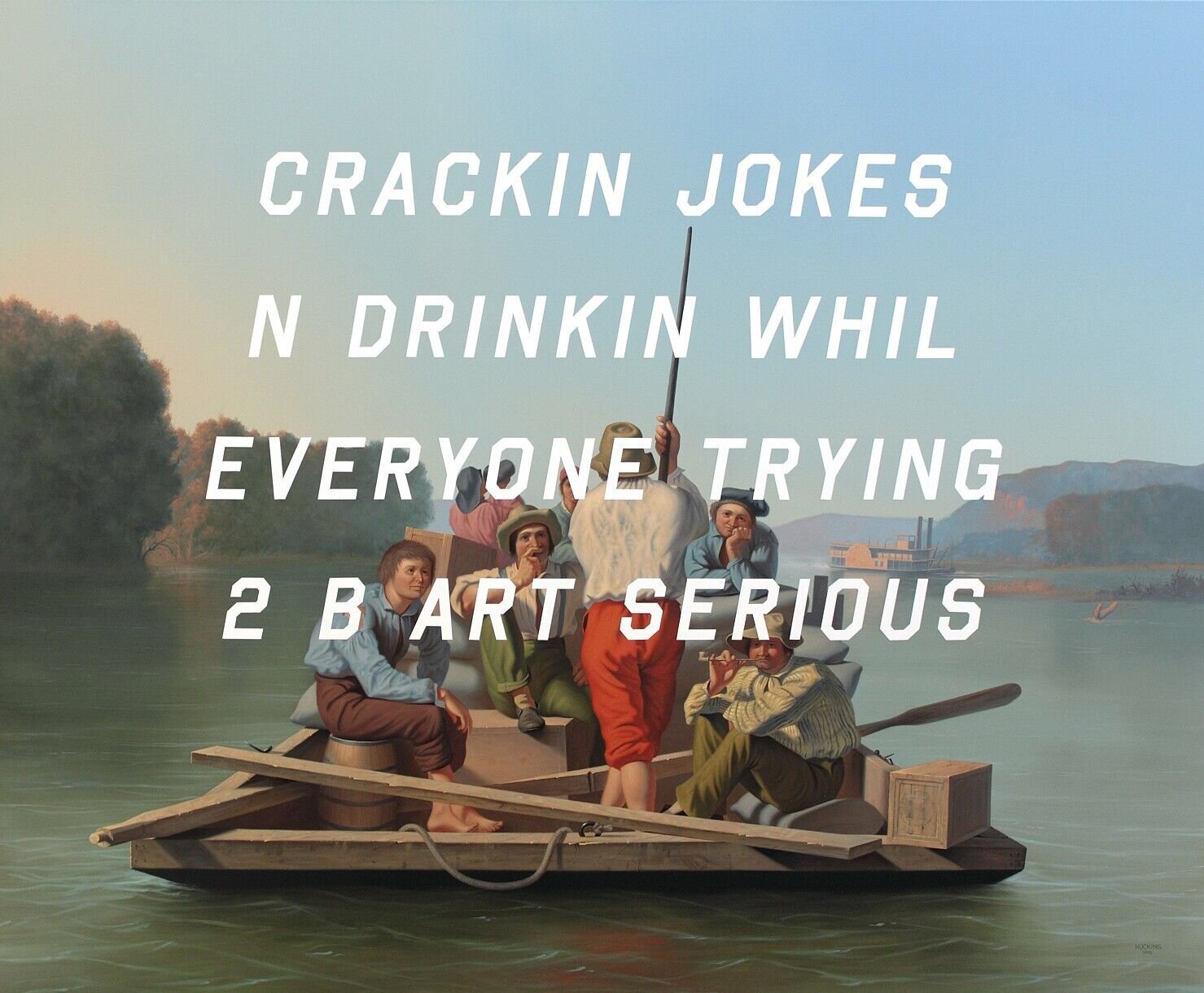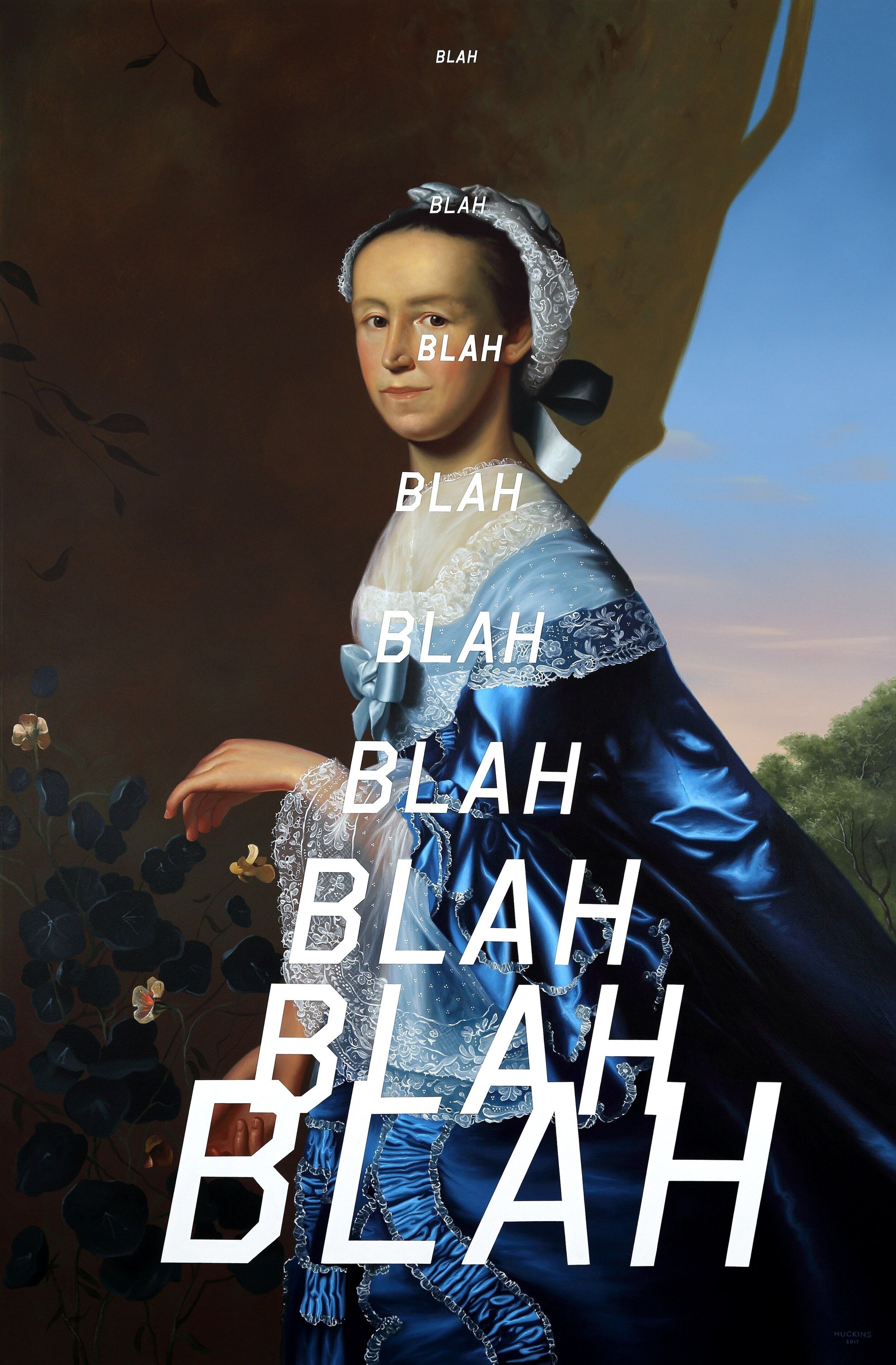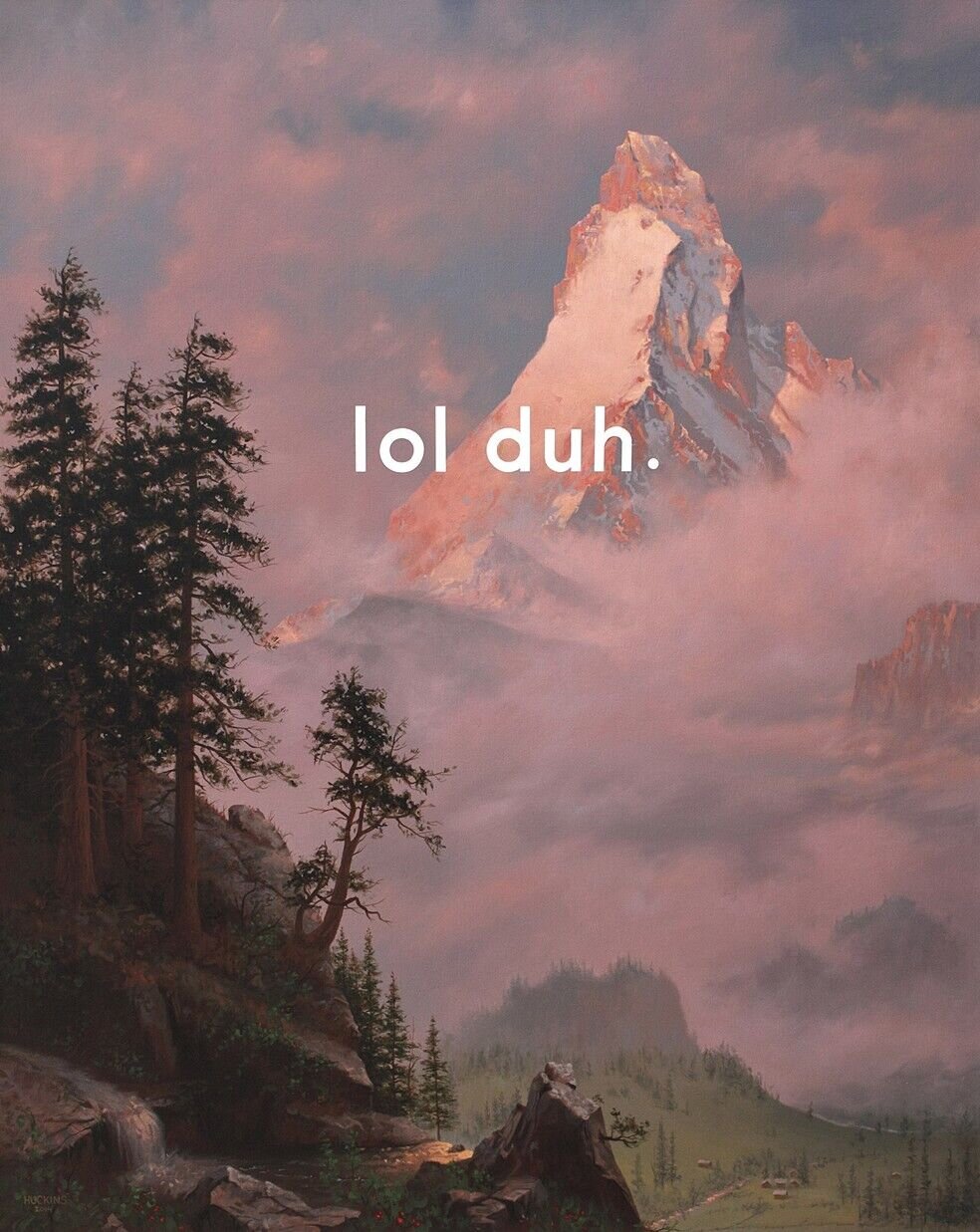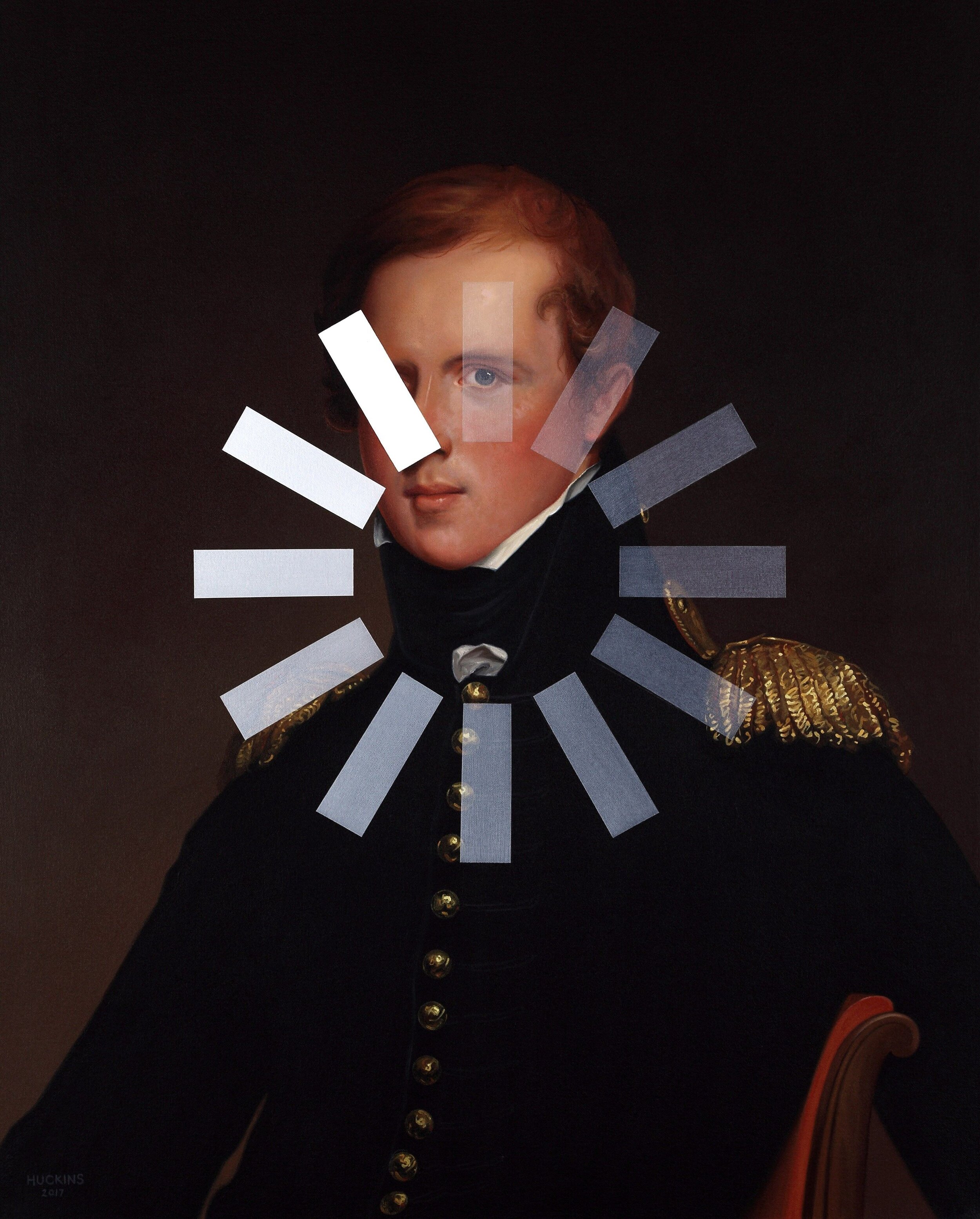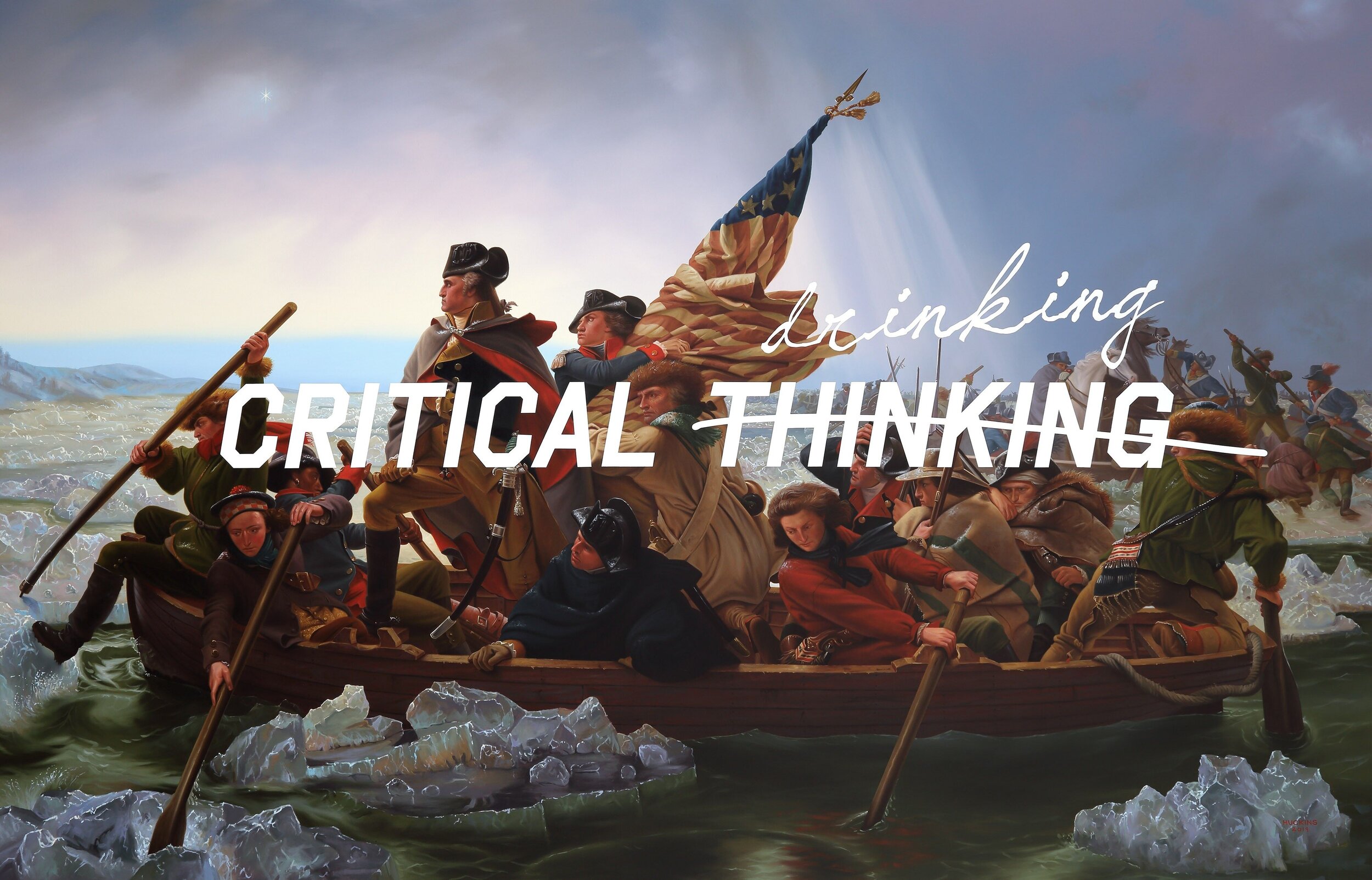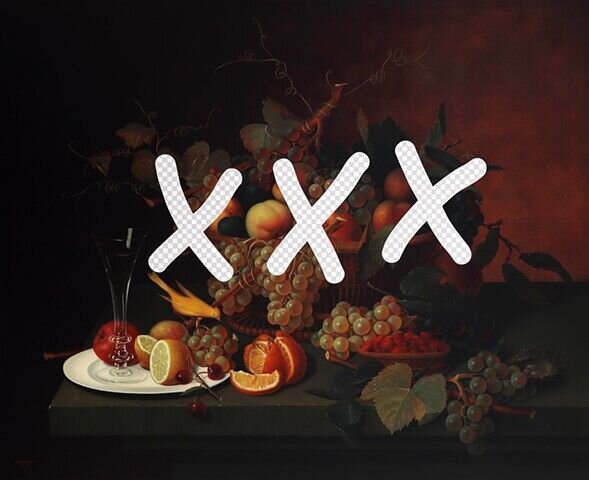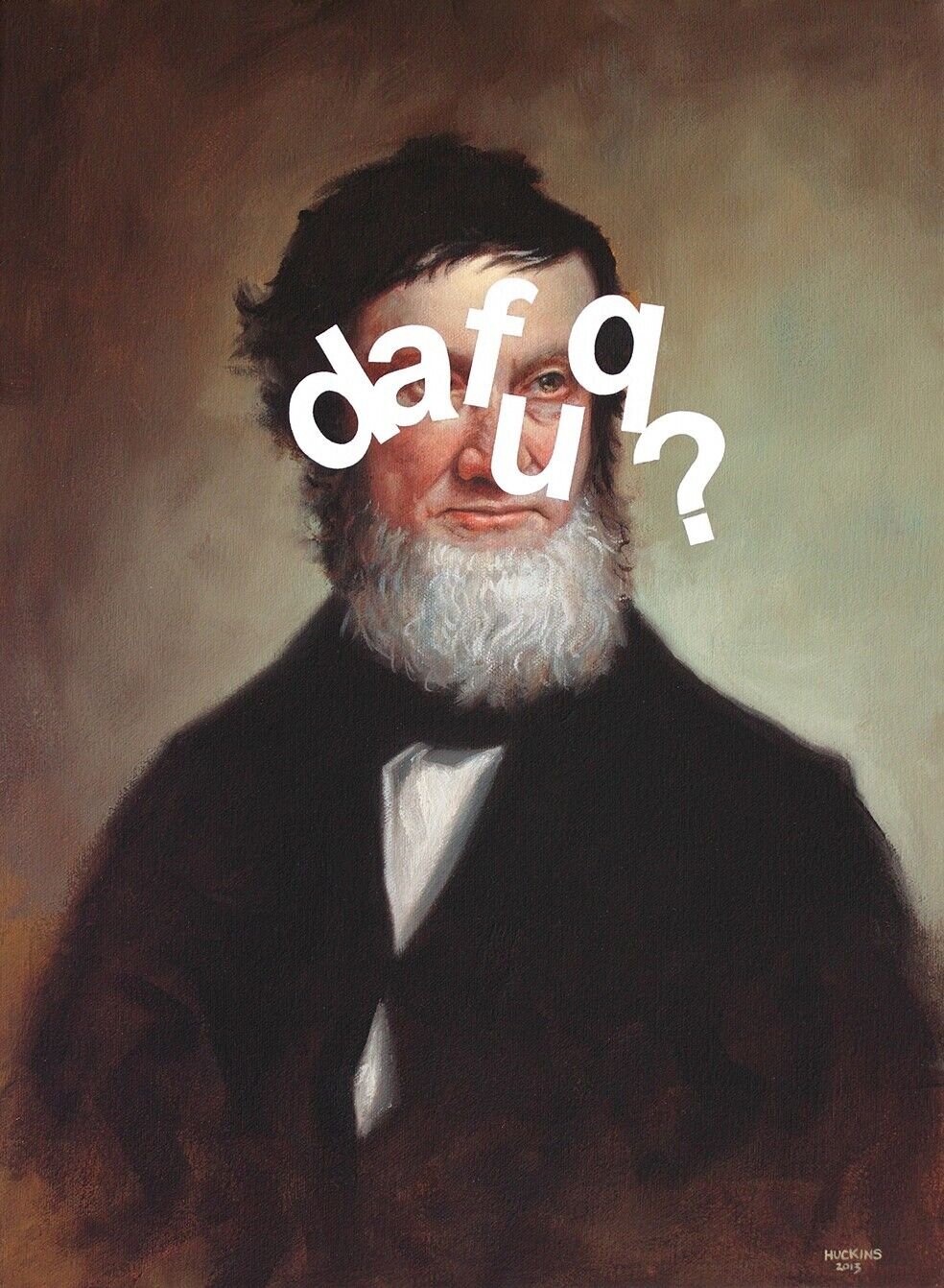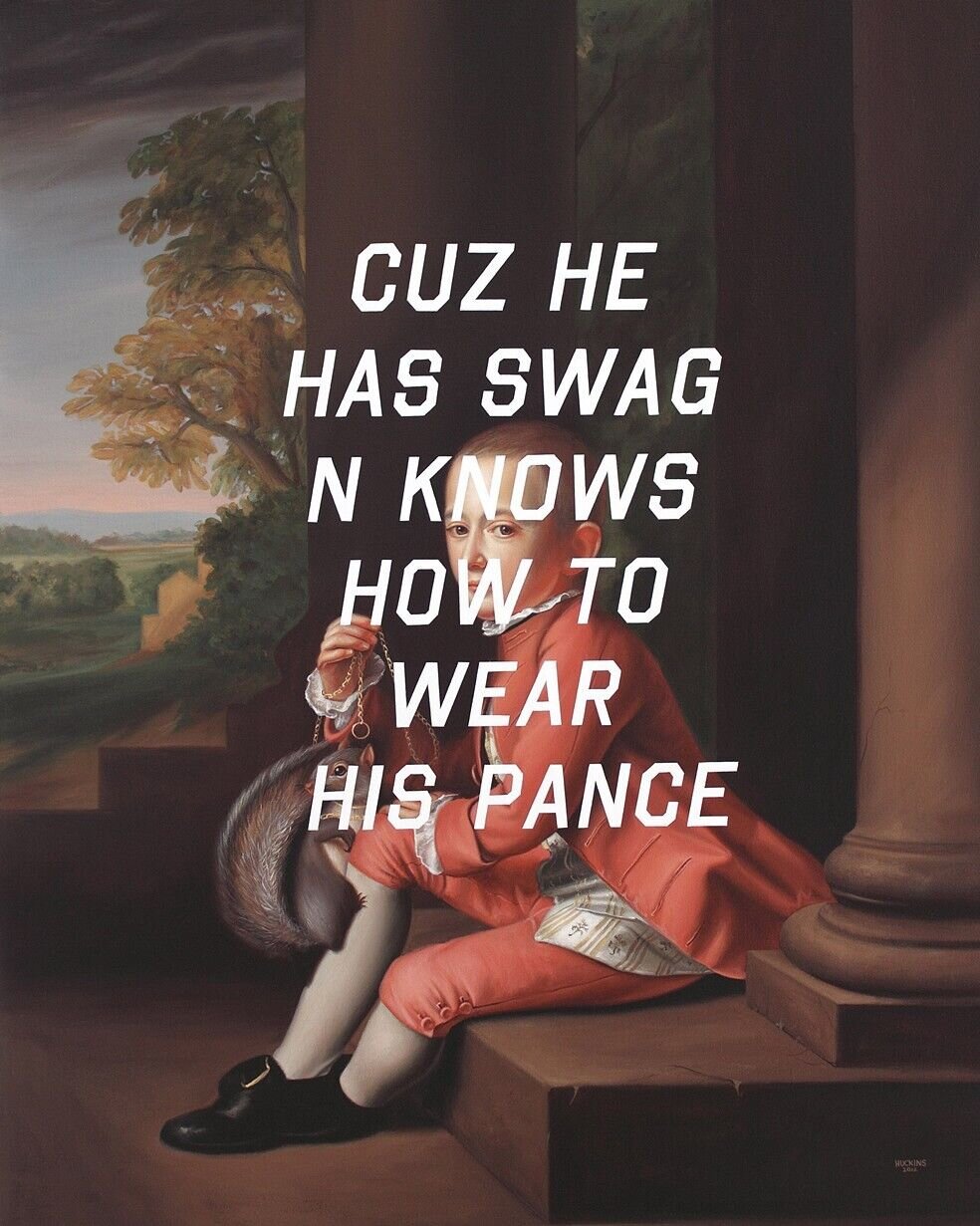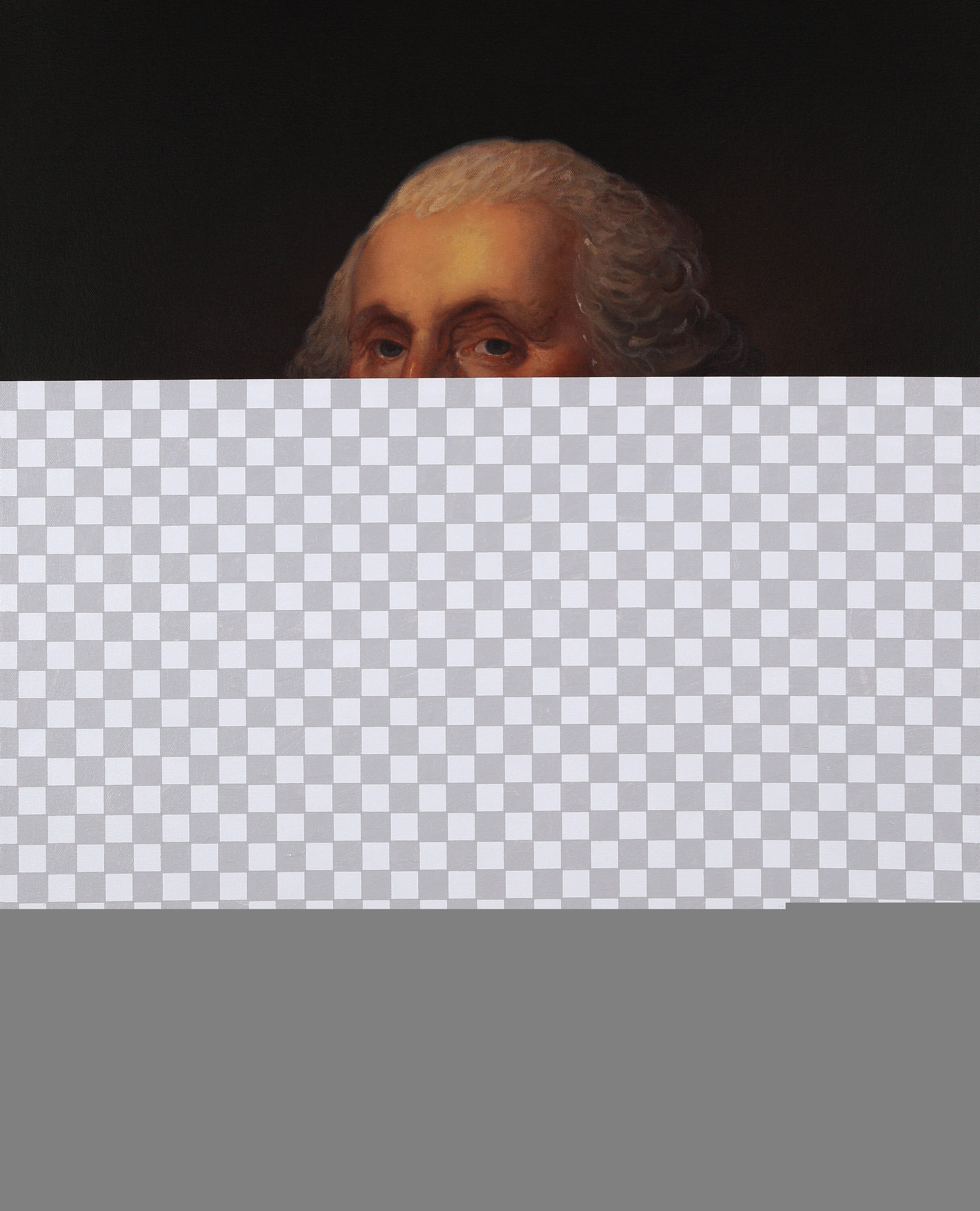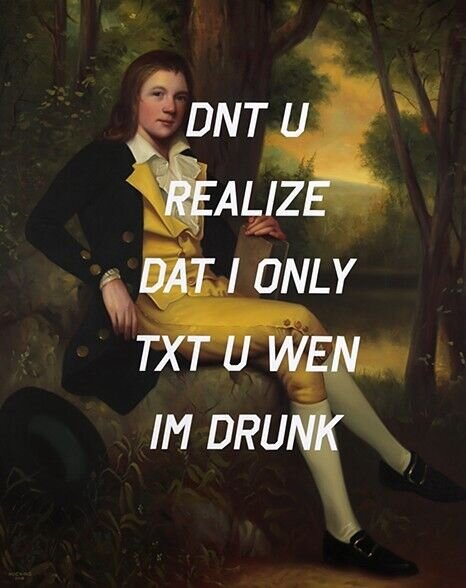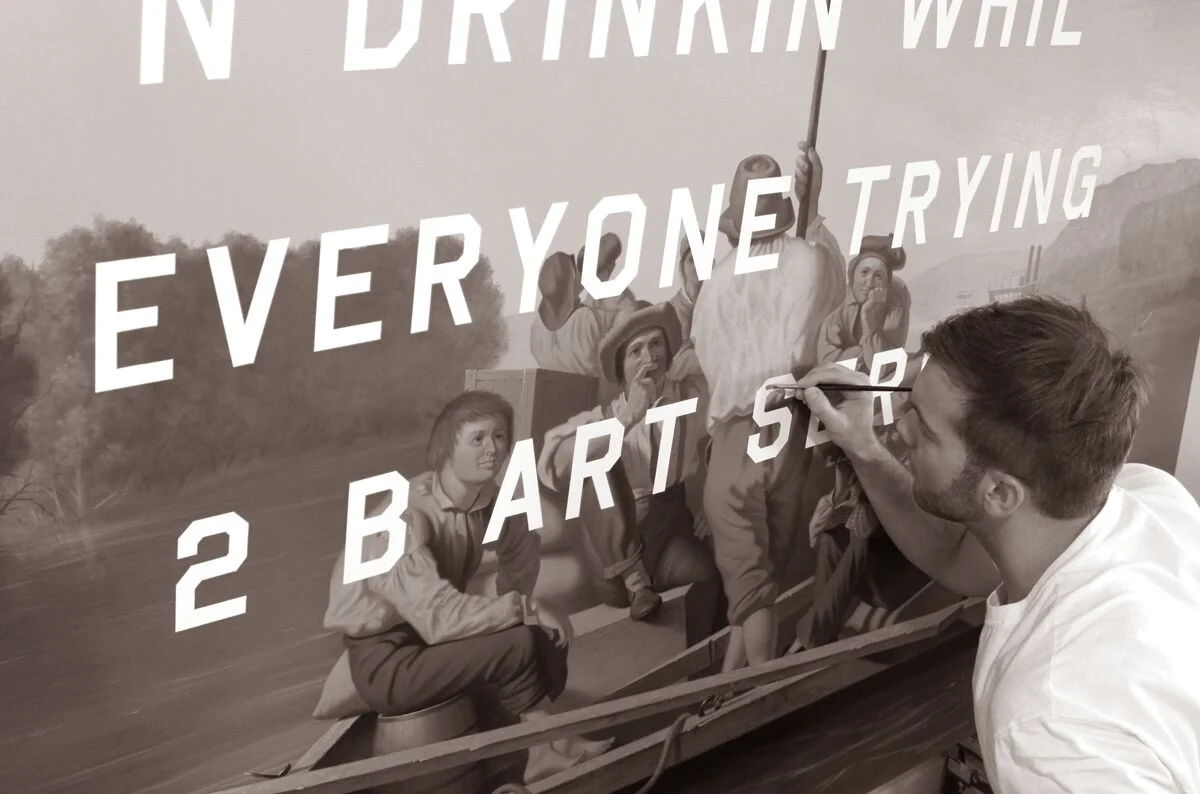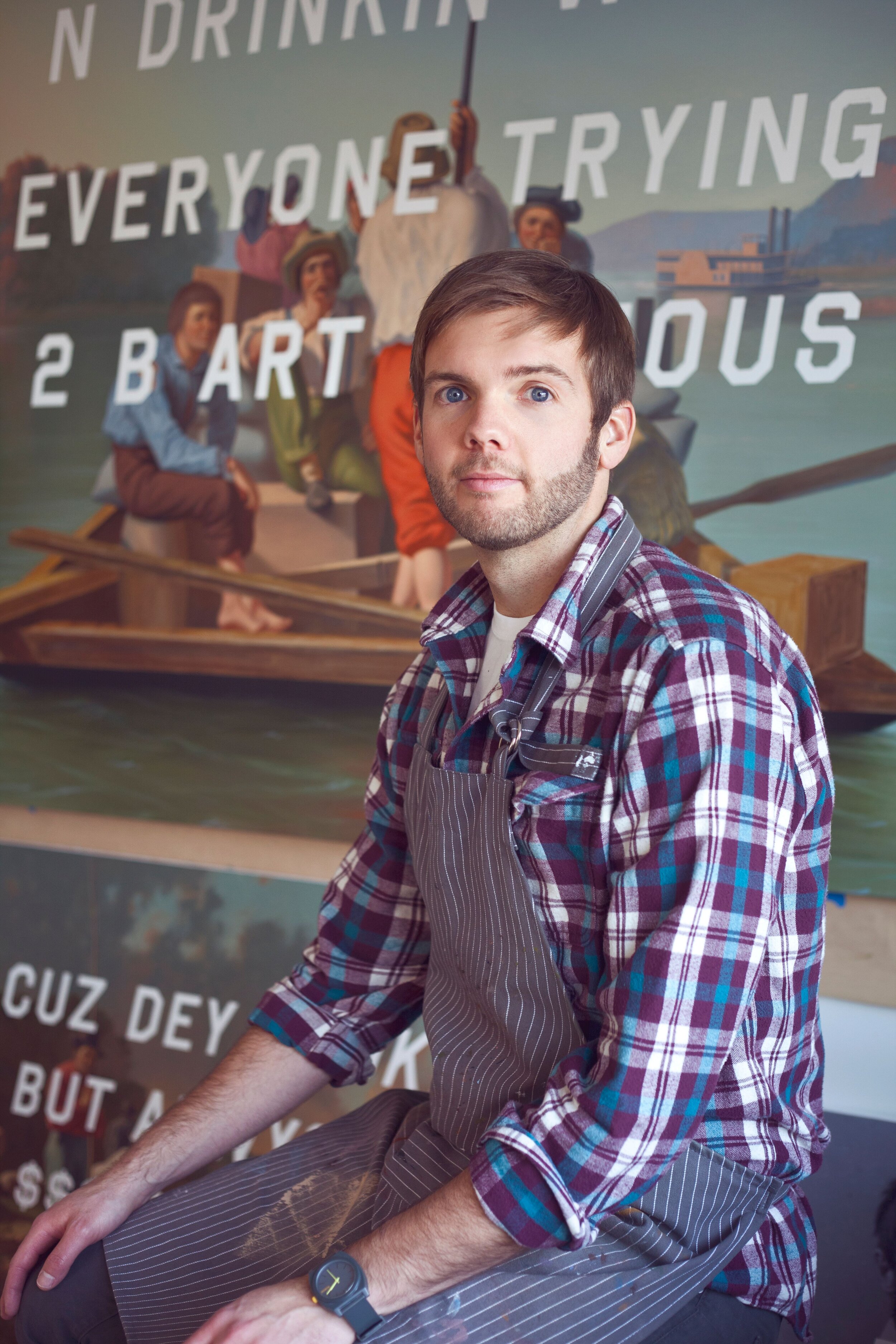Shawn Huckins (American, B. 1984) is an artist based in Denver, Colorado who merges historical imagery with contemporary texts, to create technically astute and humorous paintings.
A New Hampshire native, he earned his BA in Studio Art magna cum laude at Keene State College and is represented by galleries in Denver, Seattle, and San Francisco. His work has been published widely and he has earned a number of awards and grants for his work. He his shown his work around the United States and internationally, with a new solo exhibition Happy Go Lucky opening at Galerie Bessiéres in Chatou, France, this October.
I have followed Shawn’s work for some time, along with his thousands of other followers on Instagram. I enjoy the way he mixes art historical tropes with language of our time. His unconventional paintings pair his skills and sense of humor to create images that are fun and exciting.
-Michael
Q1. Your paintings are very labor intensive. What steps go in to making one of your paintings and about and how long do they take to produce?
A1. The beginning stages of my paintings all begin with playing around on the computer. Once I find a text phrase to marry with a classical portrait, I will play around in Photoshop with text size and placement over top an image of the portrait I’m going to replicate from the 18th/19th century. Once I’m happy with the final composition, I will draw out the entire image (including drafting out the text) onto plain white canvas. From here, I will mask off the text with tape and begin the underpainting. After the painting is complete and I’m satisfied with the end result, I will remove the tape to reveal the white lettering below. I will then touch up the letters with white paint, as sometimes the portrait portion of the painting will seep below the tape. From beginning to end, it takes generally 2-3 weeks to finish a mid/large painting. Smaller works can take a week and my largest canvases can take up to two months.
Q2. Your work regularly references art historical subjects. What attracts you to specific historical works?
A2. I think the first thought is ‘can I replicate this in a convincing and respectable manner?’ I’m really drawn to fancy clothing and detailed lace, which add times to the production process, but the end results are stunning. I typically veer toward more realistic portraits rather than gestural works, since my work is realistic based. I have done more gestural, ‘painterly’ paintings in the past, but I’m more comfortable with realism.
Q3. Do drawings and preparatory studies play a large role in your process? If so, how do you utilize them?
A3. I typically only do drawings, or small paint studies when I’m trying a new technique. I use small, cheap canvas board to do my experiments before applying them to the larger, final painting. Most of prep work is done on the computer in regards to getting the composition correct. For very large works with tons of detail, I will draw detailed drawings of portions of the painting onto trace instead of drawing on canvas, as to not dirty up the white canvas too much. Once I have my drawings on trace finalized, I draw it in reverse and rub the drawing onto the canvas.
Q4. Text is a major component of your work. How do you decide your text and image pairings and what are your goals in these?
A4. Deciding which text goes with which painting isn’t really a science. It just was feels right. I will take into consideration if the portrait is male or female, their posture, and the look on the face. I have a very large document containing texts I’ve collected over the years which I scout for on social media. I rarely, if ever, use my own text as I feel it would be too contrived. The goal is to capture the digital language of today and to show the debasement of language as it becomes shorter (ie, LOL) and grammatically incorrect.
Q5. You have exhibited widely. What do you hope audiences take away from viewing your paintings?
A5. The main goal is to make people smile and laugh. Yes, I’m talking about the de-evolvution of the English language and how communication skills are suffering due from the rise of technology, but if you smile, that’s the joy in it for me. During my last show in Seattle, my partner was standing by the door and overheard people as they were coming in for opening night. He saw people’s faces light up and smile as they walked in and overheard one couple saying ‘we need more people like him in the world.’ That made my whole night.
Q6. Who are other artists working today that you admire and why?
A6. There are so many great artists today and it’s so easy to discover them by way of Instagram. Some of my favorites are Vivian Green, Matt Hansel, and Amy Bennett. They motivate and push me to keep producing my best work possible. Maybe it’s a subconscious artist rivalry thing, but being engaged and surrounded by the work you admire only helps you produce work that you can be proud of.
Q7. Do you feel the humor in your work makes it more accessible to a broader audience?
A7. I feel more people have a better response (myself included) if the work is playful and engaging. I’ve never produced deep and dark themed paintings because I’m not attracted to that subject matter. While it certainly has its place in the world, I’d rather create work that makes people smile and laugh. I remember in college, one of my professors was trying to get me to paint subject matter that was really dark and twisted, and I just couldn’t feel it. I think she was trying to get me to use art as a therapy session. I use painting as a creative outlet, for sure, but not in the way my professor was seeking.
Q8. In terms of preparation, how do you frame your work? Historical works like those you reference may have been framed extravagantly. Do you prefer more traditional or contemporary frames?
A8. I prefer the no-frame method. I like the contemporary look using the thick canvas stretcher bars as the frame for the classical painting to give it a nice contrast along with the text. This option also allows the collector to choose what they feel is right for their homes (if they want a frame). Collector’s have sent me images of their paintings in simple maple floater frames, or another chose to have their painting in an ornate, gold leaf frame. I think both look great. I would choose the simple, maple floater frame.
Q9. You mostly utilize historical imagery from the eighteenth and nineteenth centuries. Have you or would you consider working from other periods or other types of underlying images?
Q10. What is the next major project you’re working on?
A9./10. I’m working on a new project which will debut in June 2020 at K Contemporary in Denver. It involves working with Roman sculpture from around 100 - 300 A.D. time periods. I’m moving away from contrasting classical paintings and digital text to Roman sculpture and the American discourse. It’s basically a new series of destruction and rebirth, but again, in a playful, engaging manner. I am very excited to start this.
